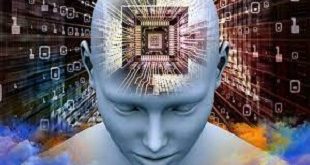Introduction:
In the rapidly evolving landscape of technology, the integration of artificial intelligence (AI) with web frameworks has become a game-changer. This synergy between advanced language models and popular web development frameworks brings forth a wave of innovation, enhancing the capabilities of web applications. In this article, we will delve into the intricacies of integrating AI with web frameworks, exploring the myriad possibilities and showcasing how this collaboration is reshaping user experiences and functionality on the internet.
I. The Marriage of AI and Web Frameworks:
The convergence of AI and web frameworks marks a pivotal moment in the evolution of web development. Web frameworks, such as Flask, Django, Express.js, and Ruby on Rails, provide the scaffolding for building robust and scalable web applications. On the other hand, AI, particularly advanced language models like GPT-3, has demonstrated remarkable language understanding and generation capabilities.
The integration of AI with web frameworks unleashes a host of opportunities, enabling developers to create dynamic, intelligent, and user-centric applications. From natural language processing to content generation, this collaboration holds the potential to transform the way we interact with and experience the web.
II. Flask: A Lightweight Marvel for AI Integration:
Flask, a micro web framework for Python, stands out as a lightweight yet powerful tool for integrating AI into web applications. Known for its simplicity and flexibility, Flask provides an ideal environment for incorporating AI capabilities seamlessly.
- RESTful APIs with Flask: Flask’s support for creating RESTful APIs makes it well-suited for integrating AI models. By developing endpoints that communicate with AI services, developers can effortlessly incorporate language understanding, sentiment analysis, or content generation into their web applications.
- Interactive User Interfaces: Flask’s ability to create interactive user interfaces facilitates the integration of AI-driven features directly into web pages. From chatbots to recommendation systems, Flask empowers developers to enhance user experiences by leveraging the capabilities of advanced language models.
III. Django: A Comprehensive Framework for AI-Powered Applications:
Django, a high-level web framework for Python, provides a comprehensive set of tools for building feature-rich and scalable applications. Its batteries-included philosophy and adherence to the Model-View-Controller (MVC) pattern make it an excellent choice for integrating AI into web development.
- Django REST Framework for API Development: The Django REST Framework extends Django’s capabilities for building APIs, facilitating the creation of robust interfaces for AI integration. Developers can design endpoints that communicate with AI services, enabling seamless communication between the web application and the language model.
- Real-Time Collaboration: Django’s support for real-time features, especially with the Channels library, enhances the development of collaborative applications. Integrating AI in real-time, such as collaborative document editing with AI-assisted content suggestions, becomes a tangible possibility, revolutionizing how users collaborate on the web.
IV. Express.js: A Nimble Choice for JavaScript Enthusiasts:
Express.js, a minimalist web framework for Node.js, has gained popularity for its speed and simplicity. For JavaScript developers looking to integrate AI into their web applications, Express.js offers a nimble and efficient platform.
- Middleware for AI Integration: Express.js middleware allows developers to seamlessly integrate AI services into the request-response cycle. This flexibility enables the incorporation of language understanding, translation services, or sentiment analysis without compromising the simplicity and speed for which Express.js is renowned.
- Single-Page Applications (SPAs) with React or Angular: Combining Express.js with modern JavaScript frameworks like React or Angular enables the development of powerful single-page applications. Integrating AI-driven features, such as dynamic content generation or personalized recommendations, becomes a fluid process within the SPA architecture.
V. Ruby on Rails: Elegant AI Integration for Ruby Developers:
Ruby on Rails, often referred to as Rails, is a web application framework written in Ruby. Known for its elegant syntax and convention over configuration philosophy, Rails provides a solid foundation for developers seeking to infuse AI capabilities into their web applications.
- RESTful APIs with Rails: Rails, by default, encourages the development of RESTful APIs. This design principle aligns seamlessly with integrating AI services through API endpoints, enabling developers to create AI-driven features within their Rails applications.
- AI-Enhanced E-Commerce: The integration of AI into Rails applications can revolutionize e-commerce platforms. From personalized product recommendations to AI-driven chatbots for customer support, Rails provides an elegant canvas for developers to create intelligent and user-friendly online shopping experiences.
VI. Web Framework Integration in Action:
Understanding the theoretical aspects of web framework integration with AI is essential, but seeing these principles in action provides deeper insights into the transformative potential of this collaboration. Let’s explore a few use cases that showcase the practical applications of integrating AI with web frameworks.
- Chatbots for Enhanced User Interaction: Integrating AI-powered chatbots into web applications revolutionizes user interaction. Using a web framework like Flask or Express.js, developers can create endpoints that communicate with natural language processing models. This allows chatbots to understand user queries, provide relevant information, and engage users in dynamic conversations—all within the familiar context of a web application.
- Dynamic Content Generation with React and Express.js: Leveraging the power of React for dynamic front-end experiences and Express.js for server-side logic, developers can integrate AI models for content generation. This could range from dynamically generated articles and blog posts to personalized recommendations based on user preferences. The seamless collaboration between the front-end and back-end frameworks ensures a smooth and responsive user experience.
- Sentiment Analysis for Social Media Platforms: Integrating sentiment analysis models into web applications built on frameworks like Django or Ruby on Rails enhances the functionality of social media platforms. Users can receive real-time insights into the sentiment of their posts or comments, enabling a more nuanced understanding of online interactions. The RESTful API capabilities of these frameworks facilitate communication with the sentiment analysis model, providing valuable insights to users.
- Real-Time Collaboration with Django and Channels: Django, with the addition of the Channels library, becomes a powerful tool for real-time collaboration applications. Imagine a collaborative document editing platform where an AI language model assists users in suggesting improvements, checking grammar, or even generating content based on the collaborative input. The combination of Django’s robust features and real-time capabilities makes this a feasible and impactful use case.
VII. Overcoming Challenges in Web Framework Integration:
While the integration of AI with web frameworks opens up exciting possibilities, it also presents certain challenges that developers must navigate. Addressing these challenges ensures the successful deployment of AI-driven features within web applications.
- Latency and Performance: AI models, especially large language models, can introduce latency into web applications. Optimizing the performance of the model and strategically caching responses can help mitigate latency issues. Additionally, utilizing background processing for computationally intensive tasks ensures that the web application remains responsive.
- Scalability: As web applications scale, the demand on AI services can increase significantly. Employing scalable infrastructure, load balancing, and asynchronous processing are essential considerations for ensuring that the integration scales seamlessly with the growing user base.
- Data Security and Privacy: AI integration often involves handling sensitive data, such as user inputs or personalized recommendations. Implementing robust security measures, encrypting communication channels, and adhering to data privacy regulations are imperative to protect user information and maintain trust.
- Model Training and Updates: AI models require continuous training and updates to stay relevant and effective. Integrating a streamlined process for model training and updating within the web application ensures that the AI-driven features remain accurate and aligned with evolving user needs.
- User Interface Design: Incorporating AI features into the user interface requires thoughtful design considerations. Ensuring that AI-driven elements seamlessly blend into the overall user experience, providing clear feedback and maintaining accessibility, is crucial for user acceptance and satisfaction.
VIII. The Future of AI-Enhanced Web Experiences:
As the integration of AI with web frameworks continues to gain momentum, the future holds exciting possibilities for web development. The collaborative efforts of developers, framework maintainers, and AI researchers are shaping a landscape where intelligent, responsive, and user-centric web applications are the norm.
- AI-Powered Personalization: The integration of AI into web applications will pave the way for hyper-personalized user experiences. From tailored content recommendations to dynamically generated interfaces based on user preferences, AI will play a central role in creating web applications that adapt to individual user needs and preferences.
- Conversational Interfaces: The rise of chatbots and conversational interfaces will become more prevalent. Web applications will seamlessly integrate natural language understanding and generation capabilities, enabling users to interact with applications through conversations, much like interacting with a knowledgeable assistant.
- AI-Driven Creativity: The integration of AI models into web frameworks will empower creative professionals in unprecedented ways. From AI-assisted content creation to dynamically generated multimedia experiences, the collaboration between AI and web development will redefine the boundaries of digital creativity.
- Cross-Domain Collaboration: The integration of AI with web frameworks will foster cross-domain collaboration, bringing together experts from diverse fields. AI-driven features will become integral components of applications spanning industries, from healthcare and finance to education and entertainment, creating a more interconnected and intelligent digital ecosystem.
IX. Conclusion:
The integration of AI with web frameworks represents a transformative chapter in the evolution of web development. As developers harness the power of advanced language models within popular frameworks like Flask, Django, Express.js, and Ruby on Rails, the web becomes a canvas for intelligent, dynamic, and user-centric applications.
From chatbots that engage users in meaningful conversations to real-time collaboration platforms enhanced by AI-driven suggestions, the possibilities are vast and exciting. As challenges are addressed and best practices evolve, the collaborative synergy between AI and web frameworks will continue to shape the digital landscape, ushering in a new era of web experiences that are both intelligent and user-focused. Embracing this intersection of AI and web development allows creators to unlock a realm of possibilities, creating a web that is not only visually appealing but also intellectually engaging and adaptive to individual user needs.


